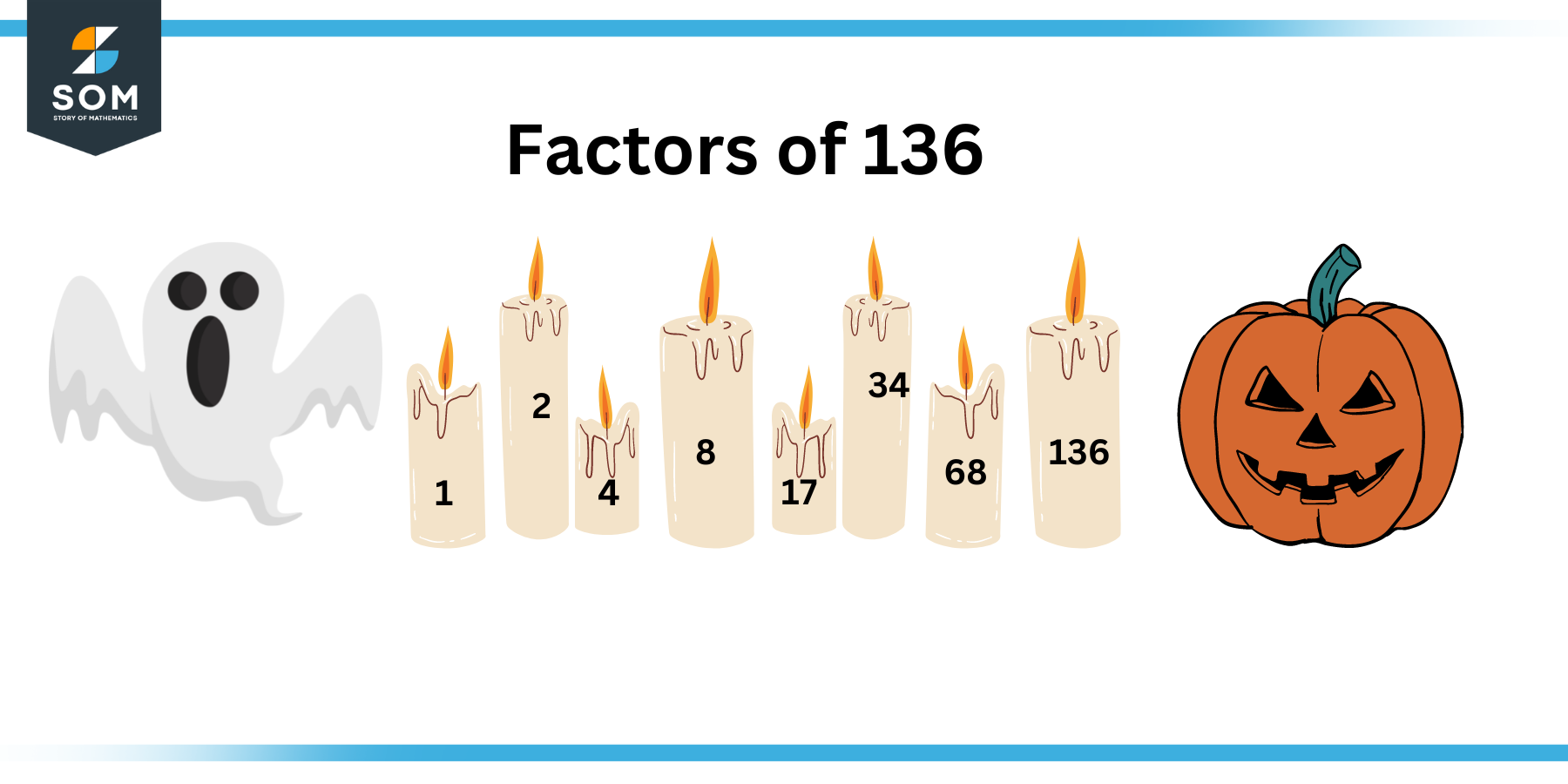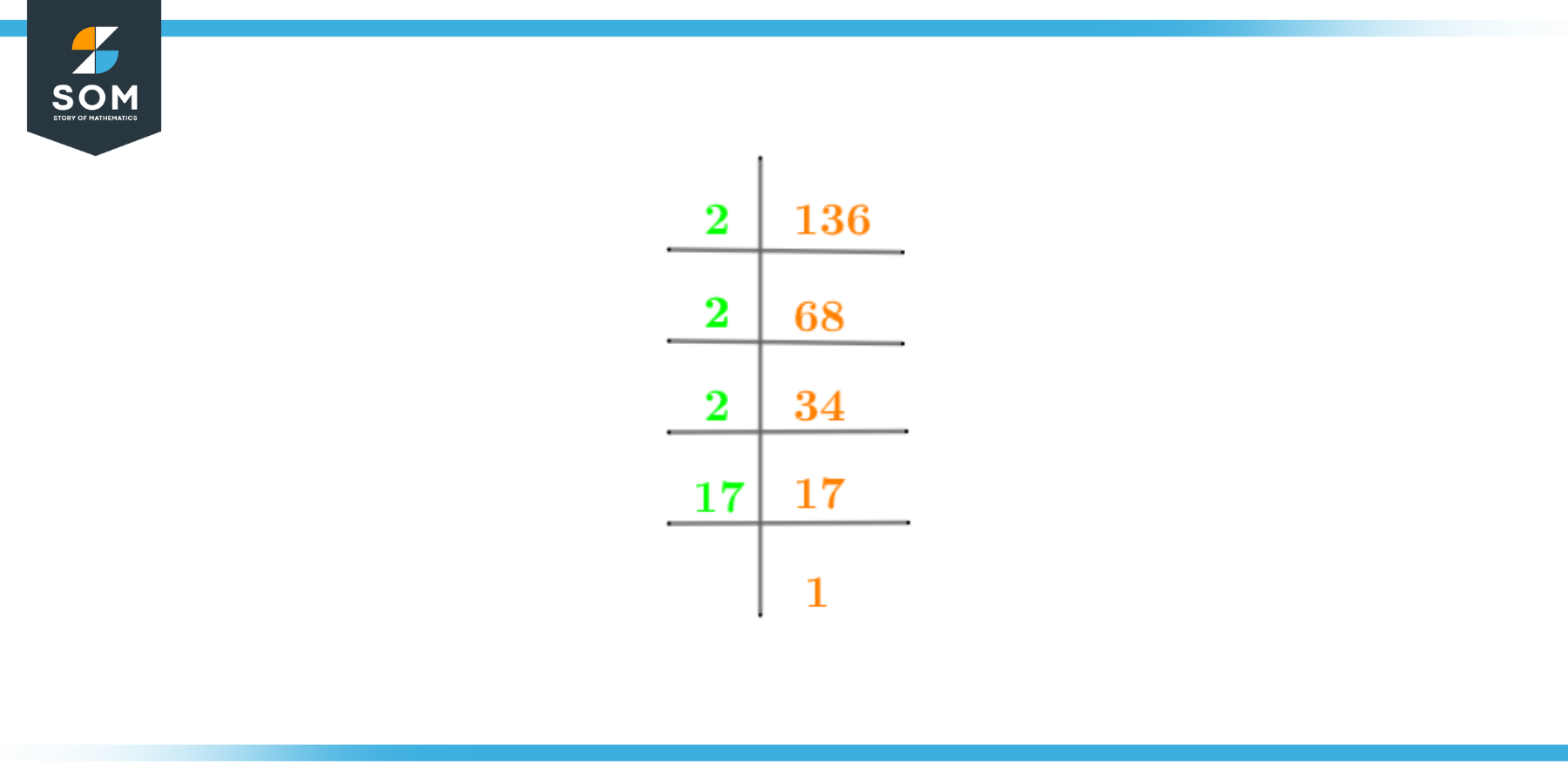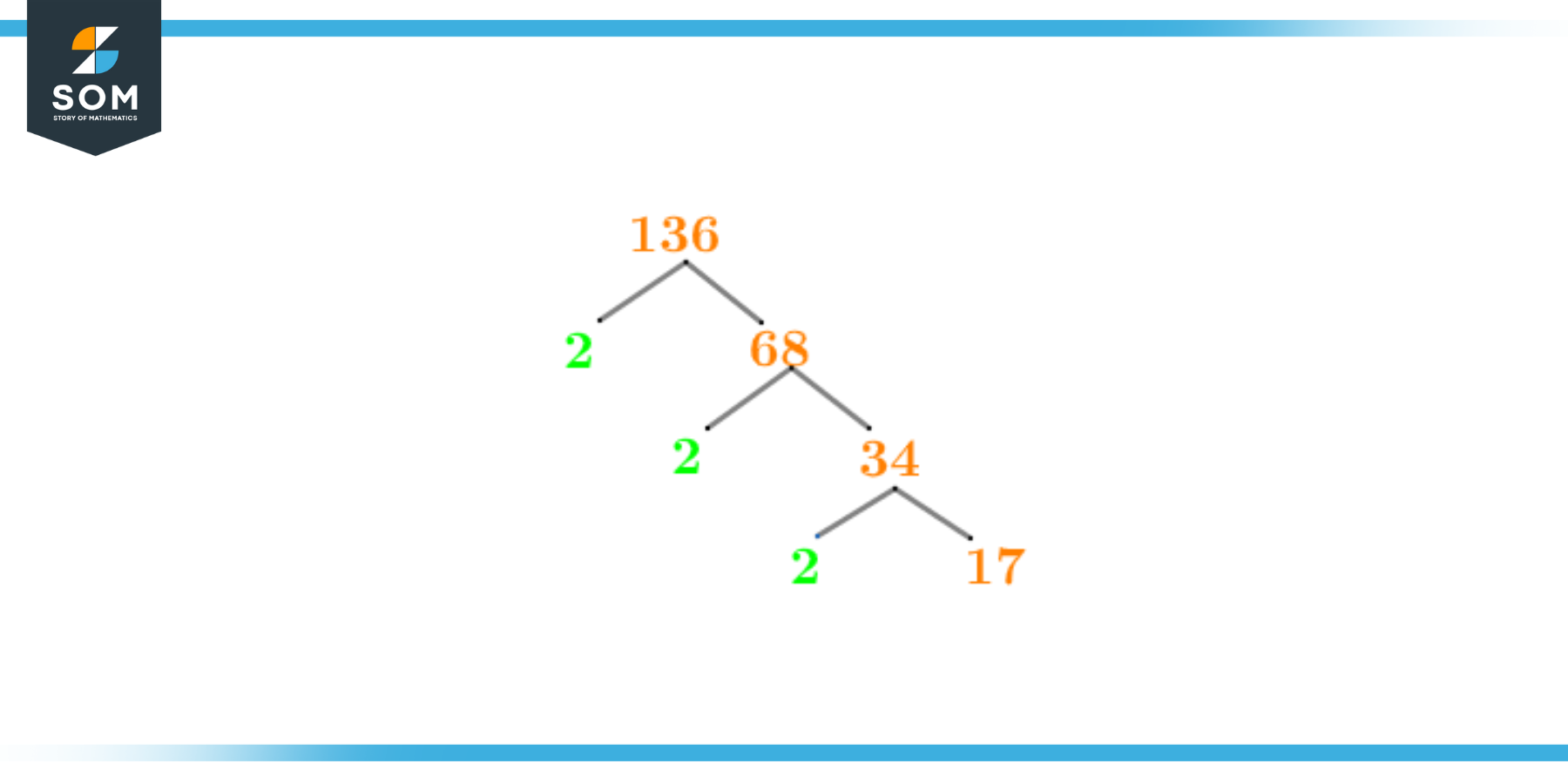JUMP TO TOPIC
Factors of 136: Prime Factorization, Methods, Tree, and Examples
Factors of 136 are the numbers upon which the number 136 is completely divisible. In other words, these specific numbers leave zero as a remainder when 136 is divided by them. Such numbers are known as Factors of 136. Factors of 136 can also be defined as the numbers that when multiplied together, give 136 as the product. Such numbers are also known as Factor Pairs of the number 136. The Factors of 136 can be both positive as well as negative. If the numbers are existing in the form of factor pairs, then these two numbers must have the same sign to yield 136 as their product. A unique fact about the number 136 is that it is an even composite number. This means that the number 136 has several factors. There are several ways to determine the Factors of 136, for instance through prime factorization, but one of the easiest ways to determine the factors of 136 is to check for numbers starting from 1 to half of the number, in this case, 136.Since half of 136 is 68, hence, an easy way to find the factors of 136 is to check for numbers from 1 to 68. Both 1 and 68 also serve as the factor of 136 as shown below:\[ \frac{136}{1} = 136\]\[ \frac{136}{68} = 2 \]To find out more about the Factors of 136 and ways to calculate the Factors of 136, dive into the article below.
Factors of 136 can also be defined as the numbers that when multiplied together, give 136 as the product. Such numbers are also known as Factor Pairs of the number 136. The Factors of 136 can be both positive as well as negative. If the numbers are existing in the form of factor pairs, then these two numbers must have the same sign to yield 136 as their product. A unique fact about the number 136 is that it is an even composite number. This means that the number 136 has several factors. There are several ways to determine the Factors of 136, for instance through prime factorization, but one of the easiest ways to determine the factors of 136 is to check for numbers starting from 1 to half of the number, in this case, 136.Since half of 136 is 68, hence, an easy way to find the factors of 136 is to check for numbers from 1 to 68. Both 1 and 68 also serve as the factor of 136 as shown below:\[ \frac{136}{1} = 136\]\[ \frac{136}{68} = 2 \]To find out more about the Factors of 136 and ways to calculate the Factors of 136, dive into the article below. What are the Factors of 136?
Factors of 136 are the numbers that produce zero as a remainder when 136 is divided from them — the factors of 136 are 1, 2, 4, 8, 17, 34, 68, and 136.In total, the number 136 has a total of 8 factors. When these factors are grouped into factor pairs, they yield 136 as the product.How to Calculate the Factors of 136?
You can calculate the factors of 136 by making use of the division method and technique. We will be discussing every one of them in this article.The factors of 136 are fairly easy to calculate. Let’s first make use of the technique mentioned above. Since we already know that the factors of 136 exist between numbers 1 and 68, we will check for all possible numbers that divide 136 completely, leaving zero as the remainder and a whole number quotient behind.To understand this statement, let’s check for the division of 136 by two numbers; 4 and 5.The division by number 4 is given as:\[ \frac{136}{4} = 34 \]\[ \frac{136}{5} = 27.2 \]Since a whole number quotient is produced by the division of 136 with 4, not by 5, hence 4 is a factor of 136.Another interesting fact to note is that those numbers which completely divide 136, leaving zero and a whole number quotient behind, have their quotients as factors as well. For instance, in the division of 136 with 4, the quotient resulted is 34, hence 34 is also a factor of 136.This can also be expressed as shown below:\[ \frac{136}{34} = 4 \]In the same way, the number 136 has a total of 8 factors and these factors are given below:\[ \frac{136}{1} = 136\]\[ \frac{136}{2} = 68 \]\[ \frac{136}{4} = 34 \]\[ \frac{136}{8} = 17 \]Both these divisors and the quotients act as factors.Hence, the factors of 136 are given below:Factors of 136 = 1, 2, 4, 8, 17, 34, 68, 136Factors of 136 by Prime Factorization
Prime Factorization is one of the most convenient ways of calculating the factors of 136. Prime Factorization is the method in which the number goes through multiple stages of the division until prime numbers are obtained at the end.In other words, the division of the number 136 keeps on occurring until 1 is received as the quotient at the end of the division process. The detailed division of 136 is given below:\[ \frac{136}{2} = 68 \]\[ \frac{68}{2} = 34 \]\[ \frac{34}{2} = 17 \]\[ \frac{17}{17} = 1 \]Hence, the prime numbers obtained at the end of the division of the number 136 are 2 and 17.The diagram depicting the prime factorization is shown below: The prime factorization of 136 can be expressed mathematically as:
The prime factorization of 136 can be expressed mathematically as:$2^{3}$ x 17 = 136
Factor Tree of 136
Another method for determining the prime factors is through the factor tree. The factor tree is the visual depiction of the prime factorization. Factor tree gained its name from the fact that the diagram forms a tree. This diagram starts with the number itself and then extends its branches into a prime factor and a quotient until prime numbers are obtained at the end.The factor tree of 136 is shown below:
Factors of 136 in Pairs
The Factors of 136 can also be categorized into Factor Pairs. A factor pair consists of two numbers acting as the factors for a given number and yielding that number when multiplied.An easy way to understand this statement is by looking at factors 2 and 68. These two numbers act as the factors of 136 but when multiplied together, they generate 136 as the result. This can be expressed as follows:2 x 68 = 136
So, the factor pair for these two numbers can be written as:Factor Pair = (2, 68)
Similarly, all the factor pairs of 136 are given below:4 x 34 = 136
8 x 17 = 136
1 x 136 = 136
Hence all the factor pairs of 136 are given below:Factor Pairs = (1,136), (2, 68) , (4, 34) , (8, 17)
Factors of 136 Solved Example
To further develop an understanding of the factors of 136, consider the example given below:Example 1
Calculate the sum of all even factors and all the odd factors of 136.Solution
To solve this example, let’s first list down the factors of 136. The factors of 136 are given below:Factors of 136 = 1, 2, 4, 8, 17, 34, 68, 136 Since we need to calculate the sum of all the even factors, so let’s list down the even factors:Even Factors of 136 = 2, 4, 8, 34, 68, 136 Calculating the sum of all these even factors:Sum = 2+4+8+34+68+136
Sum = 252
Hence, the sum of all the even factors of 136 is 252. Similarly, the odd factors of 136 are given below:Odd Factors of 136 = 1, 17 Calculating the sum of odd factors:Sum = 1+17
Sum = 18
Hence, the sum of odd factors is 18. Images/ mathematical drawings are created with GeoGebra